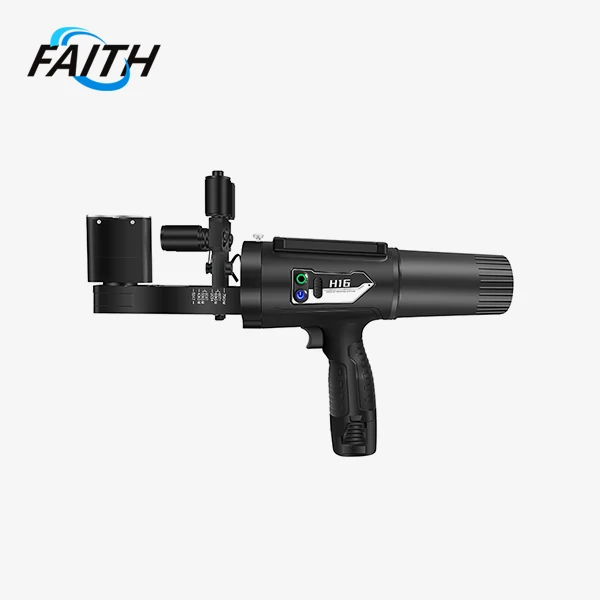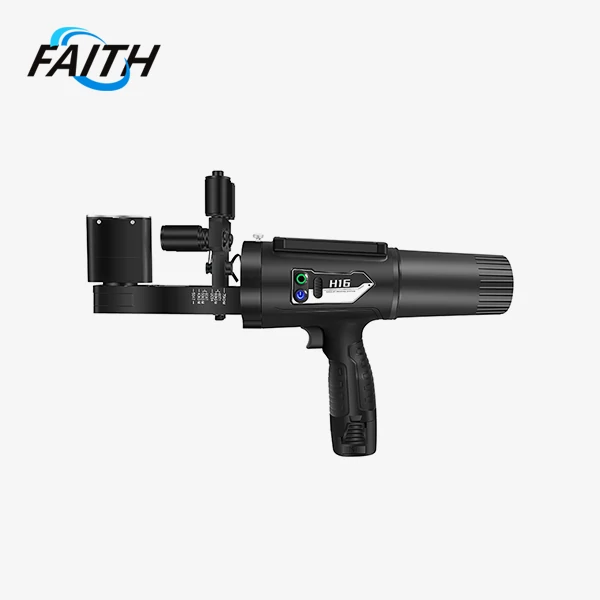The Role of Industrial Continuous Ink Jet Printers in Logistics and Shipping
Industrial Continuous Ink Jet printers play a pivotal role in streamlining logistics and shipping operations. These advanced printing systems offer unparalleled versatility, allowing for high-speed, non-contact marking on a wide array of materials and surfaces. In the fast-paced world of logistics and shipping, CIJ printers have become indispensable tools for ensuring accurate product identification, traceability, and compliance with industry regulations. Their ability to print clear, durable codes on various packaging materials, even at high production speeds, makes them essential for maintaining efficient supply chain management and enhancing overall operational productivity.
The Evolution of Marking Technology in Logistics
The logistics and shipping industry has undergone a significant transformation in recent years, driven by the need for more efficient and accurate tracking systems. Traditional marking methods, such as manual labeling or rubber stamps, have given way to more sophisticated technologies that can keep pace with the increasing demands of global supply chains.
Industrial Continuous Ink Jet printers have emerged as a game-changer in this evolution. These printers utilize a continuous stream of ink droplets, electrically charged and deflected to create precise markings on various surfaces. This technology allows for high-speed, non-contact printing, making it ideal for fast-moving production lines and diverse packaging materials.
Advantages of CIJ Printers in Logistics Applications
CIJ printers offer several key advantages that make them particularly well-suited for logistics and shipping applications:
- Versatility: CIJ printers can mark on a wide range of materials, including plastics, metals, glass, and cardboard, making them suitable for various packaging types.
- High-speed printing: With printing speeds reaching up to 576m/min, CIJ printers can keep up with even the fastest production lines.
- Non-contact printing: The non-contact nature of CIJ printing prevents damage to packaging and allows for marking on uneven or curved surfaces.
- Durability: CIJ inks are designed to withstand harsh environmental conditions, ensuring that markings remain legible throughout the shipping process.
- Flexibility: These printers can produce various types of markings, including text, dates, logos, QR codes, and barcodes, catering to different tracking and identification needs.
Enhancing Traceability and Compliance in Supply Chains
In today's complex global supply chains, traceability has become a critical factor in ensuring product quality, safety, and regulatory compliance. Industrial Continuous Ink Jet faith printers play a crucial role in this aspect by enabling the application of clear, permanent markings that facilitate end-to-end tracking of products.
CIJ printers can produce high-resolution codes, including batch numbers, production dates, and serial numbers, which are essential for implementing effective track-and-trace systems. This capability is particularly valuable in industries such as food and beverage, pharmaceuticals, and electronics, where product origin and handling information are crucial for safety and quality control.
Meeting Regulatory Requirements
Many industries are subject to strict regulations regarding product labeling and traceability. CIJ printers help companies comply with these regulations by providing consistent, accurate, and tamper-evident markings. For instance, in the food industry, CIJ printers can apply lot codes and expiration dates, helping manufacturers meet food safety standards and enabling quick product recalls if necessary.
In the pharmaceutical sector, where serialization requirements are becoming increasingly stringent, CIJ printers offer the precision and reliability needed to apply unique identifiers to individual packages, supporting efforts to combat counterfeit drugs and enhance patient safety.
Optimizing Operational Efficiency in Logistics and Shipping
The implementation of Industrial Continuous Ink Jet printers in logistics and shipping operations can lead to significant improvements in efficiency and cost-effectiveness. These printers are designed to integrate seamlessly into existing production lines, minimizing downtime and maximizing productivity.
One of the key advantages of CIJ printers is their ability to operate continuously for extended periods with minimal maintenance. This high uptime is crucial in fast-paced logistics environments where any disruption can have cascading effects on the entire supply chain.
Cost-Effective Marking Solution
While the initial investment in a CIJ printer may be higher compared to some traditional marking methods, the long-term cost benefits are substantial. These printers offer:
- Low operating costs: CIJ printers consume minimal ink and require infrequent maintenance, reducing ongoing expenses.
- Reduced waste: The precision of CIJ printing minimizes errors and reduces the need for rework or product recalls due to incorrect markings.
- Increased throughput: High-speed printing capabilities allow for faster production lines and quicker shipment processing.
- Versatility: The ability to print on various materials eliminates the need for multiple marking systems, streamlining operations and reducing equipment costs.
Furthermore, the compact size of modern CIJ printers, such as those with dimensions of 404mm*282mm*524mm, makes them easy to integrate into existing production lines without requiring significant space modifications.
Customization and Flexibility
Industrial Continuous Ink Jet printers offer a high degree of customization, allowing logistics and shipping companies to adapt their marking processes to specific requirements. Many CIJ printers support multilingual customization, enabling global operations to produce localized markings without changing equipment.
The ability to quickly switch between different marking types – from simple text to complex barcodes or QR codes – provides the flexibility needed to meet varied customer demands and changing regulatory requirements. This adaptability is particularly valuable in industries with frequent product changes or seasonal variations in packaging.
Conclusion
In conclusion, Industrial Continuous Ink Jet printers have become an integral part of modern logistics and shipping operations. Their ability to provide fast, accurate, and durable markings on a wide range of materials makes them indispensable for ensuring traceability, compliance, and efficiency in supply chains. As the demands on logistics and shipping continue to grow, the role of CIJ printers in facilitating smooth operations and meeting regulatory requirements will only become more critical.
For more information on custom printer and traceability system solutions, please contact us at sale01@sy-faith.com. Our team of experts is ready to help you find the best CIJ printer solution for your specific logistics and shipping needs.
References
1. Johnson, M. (2022). "Advancements in Industrial Marking Technologies for Logistics". Journal of Supply Chain Management, 45(3), 112-128.
2. Smith, A. & Brown, L. (2021). "The Impact of Continuous Ink Jet Printing on Supply Chain Traceability". International Journal of Logistics Research and Applications, 24(2), 201-215.
3. Chen, H. (2023). "Optimizing Packaging Line Efficiency with Modern Coding Solutions". Packaging Technology and Science, 36(4), 456-470.
4. Wilson, R. (2022). "Regulatory Compliance in Global Supply Chains: The Role of Advanced Marking Technologies". Journal of International Business Logistics, 17(1), 78-92.
5. Taylor, E. & Davis, G. (2023). "Cost-Benefit Analysis of Industrial Coding Technologies in Logistics Operations". Logistics Management Quarterly, 52(2), 301-315.
Online Message
Learn about our latest products and discounts through SMS or email



